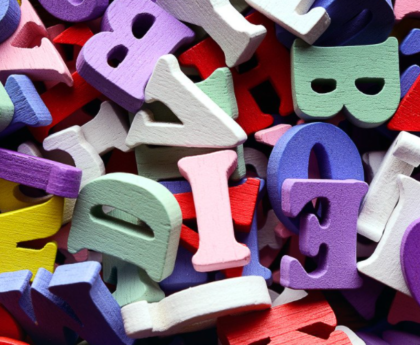Your child is writing a story about their stuffed animal. They pause, pencil hovering over the paper. “Mom, is it ‘stuf’ or ‘stuff’?” You might wonder the same thing. Why do some words double their final letters while others don’t?
Welcome to the wonderful world of the Floss Rule—one of English spelling’s most reliable patterns. Once you understand it, you’ll help your child spell hundreds of words correctly without memorizing each one individually.
What Is the Floss Rule?
The Floss Rule is beautifully simple. When a one-syllable word has a short vowel sound and ends in F, L, or S, we double that final letter.
Let’s break that down. A one-syllable word means just one beat when you say it out loud. Words like “cat,” “dog,” and “sun” are all one syllable. A short vowel sound is what we hear in words like “cat” (short A), “pet” (short E), “sit” (short I), “hot” (short O), and “cup” (short U).
So when you combine a short vowel with F, L, or S at the end, you double that consonant. That’s why we write “puff” instead of “puf” and “floss” instead of “flos.”
The rule gets its name from the word “floss” itself, which perfectly demonstrates all three letters that get doubled.
Why This Rule Exists
English spelling can feel random, but most patterns have reasons behind them. The Floss Rule helps readers know how to pronounce vowels correctly.
When we double those final consonants, it signals to readers that the vowel before them is short. Without that doubling, readers might try to pronounce the vowel as long. Think about the difference between “staff” (short A sound) and an imaginary “staf” that might sound like “stayf.”
This pattern developed over centuries of English spelling development. Early English writers needed ways to show pronunciation on paper. Doubling final consonants became one reliable method.
Your child doesn’t need to know the history. However, understanding that spelling patterns have a purpose helps reading and writing feel less arbitrary. Patterns make sense once you see them.
Common Floss Rule Words Your Child Will Use
Let’s look at real words that follow this pattern. Your child encounters these every day.
Words ending in FF: puff, stuff, stiff, cliff, cuff, muff, buff, sniff, whiff, Jeff
Words ending in LL: doll, ball, bell, tell, sell, well, will, hill, full, pull, dull, gull, mill, pill, tall, wall, fall, call, all, yell
Words ending in SS: floss, toss, boss, moss, loss, cross, class, glass, grass, pass, miss, kiss, hiss, fuss, bless, dress, press, mess
Notice how natural these words feel? Your child probably already reads many of them. Now they’re learning why they’re spelled this way.
Some children memorize these words one by one. Others learn the pattern and apply it independently. The pattern approach builds stronger spelling skills. It teaches children to think about word structure instead of just visual memory.
Teach the Floss Rule to Your Child
Start with words your child already knows. Point out “ball” or “dress” during reading time. Ask them to notice what comes before that doubled letter. Is it a short vowel sound? Count the syllables together by clapping.
Make it tactile. Have your child write Floss Rule words in sand, shaving cream, or with finger paints. The physical act of forming two Fs, two Ls, or two Ss reinforces the pattern.
Play sorting games. Write words on index cards—some that follow the Floss Rule and some that don’t. Let your child sort them into categories. Words like “kiss” and “miss” go in one pile. Words like “bus” and “yes” go in another. This helps them see the pattern in action.
Create silly sentences using multiple Floss Rule words. “The boss will toss the doll off the tall cliff.” Your child will giggle while absorbing the pattern naturally.
During writing time, remind your child to check for the pattern. Did they write a one-syllable word with a short vowel ending in F, L, or S? Then they probably need to double that letter.
Exceptions Worth Knowing
Like most English spelling rules, the Floss Rule has exceptions. Your child will encounter them eventually.
Common exceptions include: if, of, this, us, yes, bus, plus, gas, pal, gal
These words break the pattern, but they’re high-frequency words. Your child will memorize them through repeated exposure. Point out when they’re different. “Notice that ‘if’ doesn’t double the F like ‘puff’ does. That’s one of our tricky words.”
Some words don’t follow the rule because they have two consonants before the final letter. Words like “melt” or “fast” don’t need doubling because those middle consonants already signal a short vowel.
Other exceptions happen with words borrowed from other languages or words that have changed pronunciation over time. English is full of historical quirks.
Don’t overwhelm your child with exceptions right away. Learn the rule first. Handle exceptions as you encounter them naturally.
When Your Child Struggles With Doubling
Some children grasp the Floss Rule immediately. Others need more time and practice. Both paths are completely normal.
If your child forgets to double letters, go back to basics. Practice identifying short vowel sounds. Make sure they can distinguish between short and long vowels reliably. This foundation matters.
Use visual aids. Create an anchor chart with example words grouped by their ending letters. Post it where your child does homework. Let them reference it freely.
Some children benefit from saying the rule aloud before writing. “One syllable, short vowel, F-L-or-S. Better double it!” This verbal reinforcement builds mental pathways.
Remember that spelling development takes time. Your child won’t spell everything perfectly overnight. Celebrate progress. Did they double one letter correctly today? That’s growth worth praising.
Build Confident Spellers
The Floss Rule represents something bigger than just three letters. It teaches your child that English spelling has patterns. They can learn these patterns. They can apply them independently. They can become confident spellers who tackle new words without fear.
Each spelling pattern your child masters builds their overall literacy foundation. The Floss Rule connects to phonics knowledge. It reinforces short vowel sounds. It develops spelling awareness. All these skills support reading comprehension and writing fluency.
Your encouragement matters enormously during this process. When your child misspells a word, frame it as a learning opportunity. “Let’s think about this together. Is that a short vowel sound? Does it end in F, L, or S? What should we do?” This approach builds thinking skills alongside spelling skills.
Start Your Child’s Spelling Success Today
Understanding the Floss Rule gives your child power over hundreds of common words. Instead of memorizing each word individually, they learn one pattern that applies broadly. That’s efficient learning that builds confidence.
Ready to help your child master essential spelling patterns like the Floss Rule while building strong reading skills? Reading.com uses systematic, science-based instruction that teaches children the patterns behind English spelling and reading. Our program builds foundational skills step by step, so your child develops true literacy confidence. Start your 7-day free trial today and watch your child’s spelling and reading skills flourish.





